Sale 10 % Off. Enter code NEW10 at checkout. (Add item to cart, click on black cart icon, then "VIEW CART", then "Use Coupon Code").
The Complete Guide to Bracelet Styles
Check out our illustrated guide to help you identify the different
types of bracelet styles..
Bracelets have been worn throughout the ages to draw attention to the beauty of the wrist and hands. Women throughout history have worn decorative bracelets from Cleopatra to Marilyn Monroe to Michelle Obama.
The history of the bracelet dates back to the Ancient Egyptians in 5000 B.C, although a bracelet found by archaeologists in Turkey in 1995 was dated to about 7500BC!.
Researchers were astounded at the detail and craftmanship found in the 9500 year old bracelet.
.
Above: Early Victorian silver cuff bracelet
The word bracelet comes from the Greek “brachile” which means “of the arm.”
Bracelets have been made from a wide variety of materials over the years, such as leather, cloth, plastic, and metal amongst others.
They are typically adorned with jewels, rocks, shells, metal, crystals or pearls, to name just a few.
Bracelets come in many different styles. Our guide below covers all you need to know about the different types of vintage and antique bracelets.
1) CUFF BRACELET
A cuff bracelet is usually a rigid wide bracelet that does not close together but just rests on the wrist with a gap on the inner side of the wrist. Cuff bracelets are generally worn low down on the wrist rather than further up the arm.
.
Above: Vintage silver cuff bracelet
In the early 19th century Zuni and Navajo silversmiths made cuffs for tourists who were travelling westwards from Chicago to Los Angeles on the Atchison, Topeka & Santa Fe Railroad with the train making several stops in the South West USA.
The cuffs were dominated by large pieces of turquoise while others incorporated small stones as highlights or in grid formation.
The William Spratling company in Taxco, Mexico, were silversmiths who also designed cuffs. Early cuffs from the 1930s and ’1940s were often set with amethysts while later vintage cuffs from Taxco made in the 1950s and ’60s included common stones such as obsidian and quartz.

Above: William Spratling Mexican silver cuff bracelet with amethyst
Postwar modernist jewellers from New York such as Frank Rebajes and Paul Lobel favoured cuff bracelets because they offered good wide surface areas for their designs. The same motivation probably applied to Scandinavian
jewellery designers from Jacob Hull to Georg Jensen
Cuff bracelets were also in fashion with contemporary Americans designers like David Yurman and acclaimed jewellers such as Tiffany and Van Cleef and Arpels, whose gold cuffs were worn by Jacqueline Kennedy Onassis.
2) CHARM BRACELET
To put it simply a charm bracelet is a delicate item of jewellery for the wrist decorated with small ‘charms’ or trinkets.
It is unknown exactly when this tradition began, however, it has been established that small twine bracelets decorated with shells found in the African Continent ,are over 75,000 years old.
In Europe bracelets dating from 30,000 years ago, at the height of the last ice age, have been found with small charms carved out of ivory from mammoths.
People may have won these charm bracelets for aesthetic or emotional reasons much like today. Or it may have been as symbol of allegiance or faith. Some charm bracelets may also been worn as magic charms to either bring luck or ward of evil spirits.

Above: Victorian charm bracelet
The tradition of modern charm bracelets, with a chain-link bracelet made from white gold or silver is Victorian in origin.
Queen Victoria owned various charm bracelets fuelling a trend among the middle and upper classes of America and Europe.
During the late 19th and early part of the 20th century, charm bracelets also became fashionable among all areas of society.
During world war 1 and 2 , some soldiers sent back charms and trinkets to their mothers, wives and daughters from countries where they were stationed as mementos.
From the 1950s onwards, Hollywood actresses started wearing charm bracelets on screen. This began a booming popularity trend that continues to this day.

Above: 9 carat gold vintage charm bracelet
3) BOOK CHAIN BRACELETS
This is a metal chain bracelet with links of rectangular folded metal. Each link resembles a little book.

Above: Victorian brass book chain bracelet
This type of jewellery emerged during the Victorian Era where the book chain bracelets were often engraved, and continued into the Edwardian Era. It was particularly popular during the Victorian Jewellery Revival which occurred in the latter part of the Art Deco period in the 1930's and 1940's.

Above: Blood stone cameo book chain bracelet
4) GATE BRACELETS
Gate bracelets became popular during the Victorian era, although their exact origins are hard to establish.
The term ‘gate’ bracelet refers to the unusual chain style of interlocking barred panels. These panels are said to resemble the gates and fences of English castles and country estates .
The style of chain of the gate bracelet is similar to both belcher link and fetter link chains. The main distinguishing feature of a gate bracelet is the large sized heart shaped charm.

Above: Victorian 9 carat gold , turquoise, and seed pearl gate bracelet
The charm has a lock and key which is the closure of the bracelet. It is a perfect representation of Victorian ideas about chastity and romanticism.
They were usually made out of 9, 10, or 14 carat gold. Silver gate bracelets were not particularly fashionable during the Victorian Era and platinum had not yet been created.

Above: Saphire and seed pearl gate bracelet
5) CLAMPER BRACELET
This type of bracelet is fixed around the wrist by a spring type clasp. The origin of this type of bracelet dates back to the 1940s.
Vintage clamper bracelets were made from a wide selection of materials including diamonds, silver, gold, metal, rhinestones, or plastic.
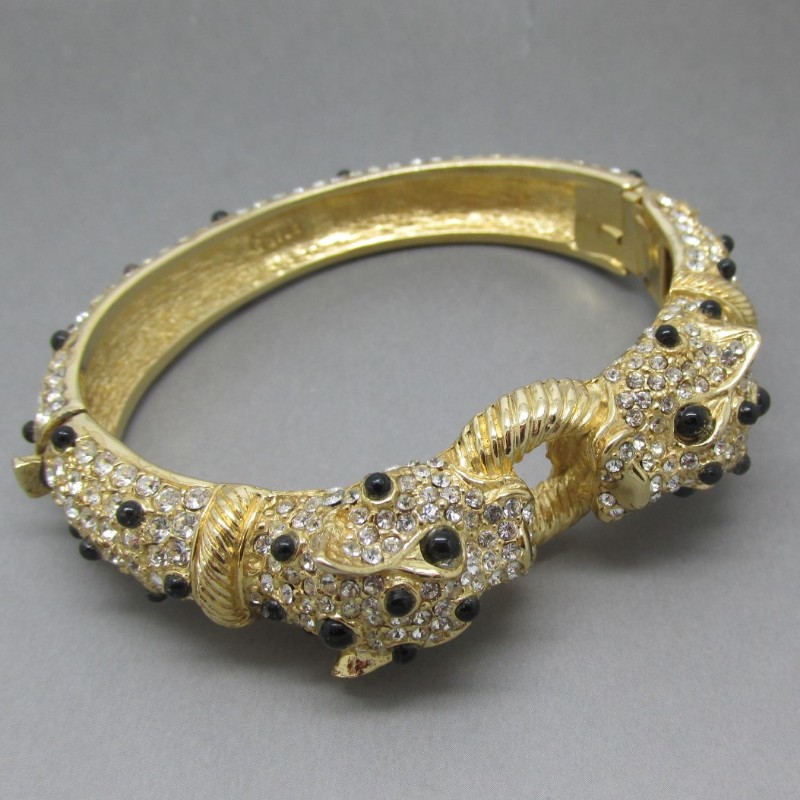
Above: Rare Ciner crystal panther bracelet
They were often part of a set including earrings and or a brooch. In the 1960's neon plastic clamper bracelets were very fashionable.
Clamper bracelets remain popular today with collectors and those that come with matching brooches or earrings are most sought after.

Above: 1940's laurel wreath clamper bracelet
6) TORSADE BRACELET
A torsade bracelet comprises several strands of beads or pearls held together with a clasp. The name "torsade" means "twist" or "cable" in French. It is an old style of bracelet - examples of the torsade bracelet have been found in Ancient Egypt .

Above: Gold and coral torsade bracelet
7) CHAIN LINK BRACELET
The chain link bracelet is exactly as it sounds. A bracelet made from chain. The chains can be a multitude of different metal chain types and they can be chunky and strong or thin and delicate. Gold and silver chain bracelets have remained popular through the eras.

Above: Napier vintage chain link bracelet
8) LINE OR TENNIS BRACELET
The line bracelet refers to a slim, flexible type of bracelet comprising a series of rectangular or square links which are set in a single line.
The stones are either identical stones or combinations of different types of stones. This type of bracelet was developed in the first part of the twentieth century .

Above: Art deco emerald and diamond line bracelet
It became very popular in the 1920's as the style reflected the regular patterns and geometric design ethos of the Art Deco period.They were often worn with flapper dresses.
The line bracelet had a revival in the 1980's when set with diamonds it became known as the tennis bracelet.
Above: Amethyst and silver double row tennis bracelet
Line bracelets can be costume jewellery where they are gold and silver plated and set with glass or crystal stones,or they can be fine jewellery where beautiful gemstone are set in gold or sterling silver settings
9) SLIDE BRACELETS
A slide is a type of open style clasp through which a ribbon or chain can be passed. The front part of the slide is often very detailed while the rear has one or two bars somewhat like a buckle. The term 'slide bracelet' generally refers to a bracelet comprising many individual slides set on a chain in rows of one or two.The slides are often separated by little balls.
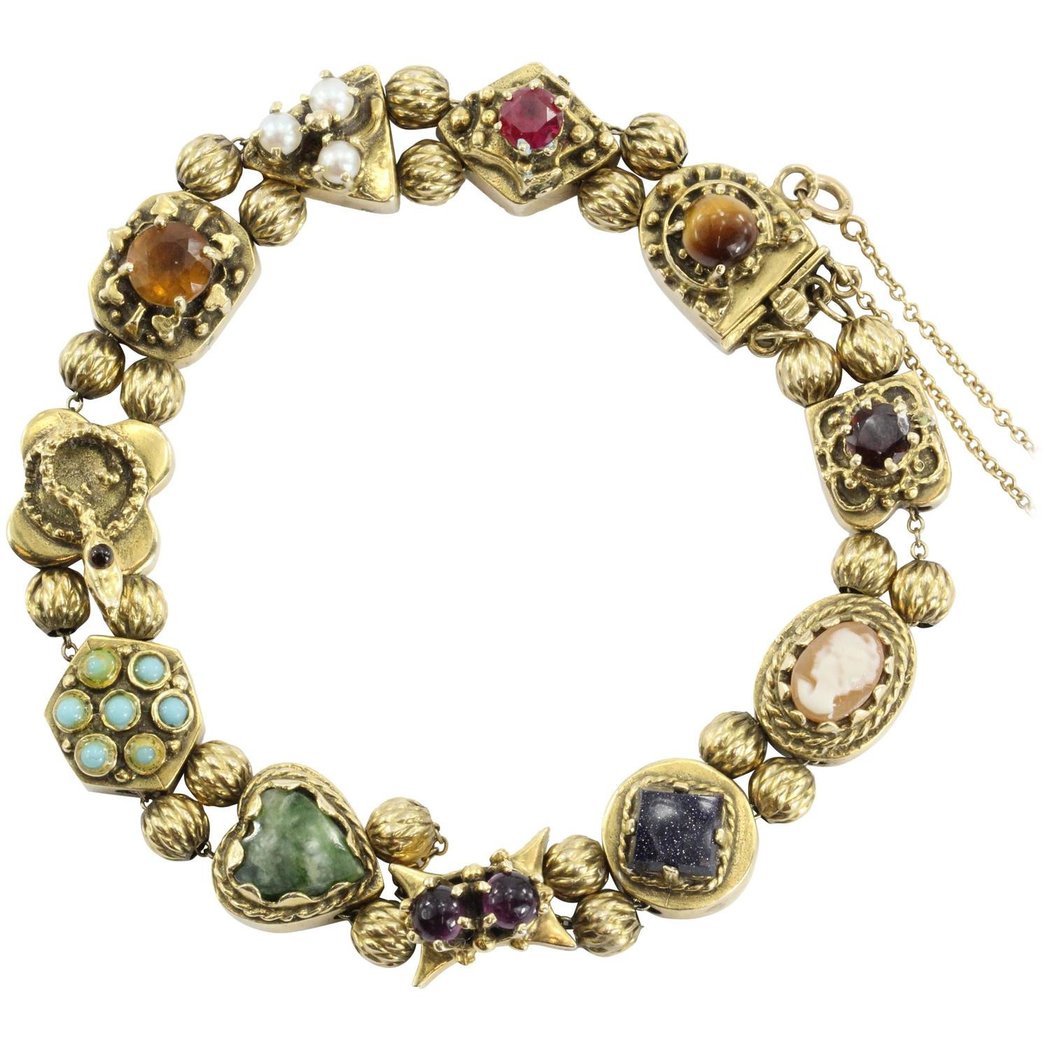
Above: Victorian slide bracelet with cameos and gems.
10) BANGLE
Bangle bracelets are very popular fashion jewellery today , however they actually date back to more ancient times. They can be made of any material that can be carved forged or moulded such as gold, silver, wood, copper, leather, or beads.
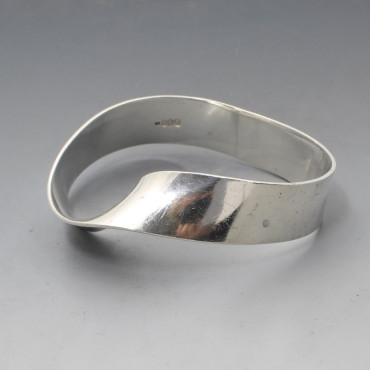
Above: Chunky silver bangle by Seamus Gill
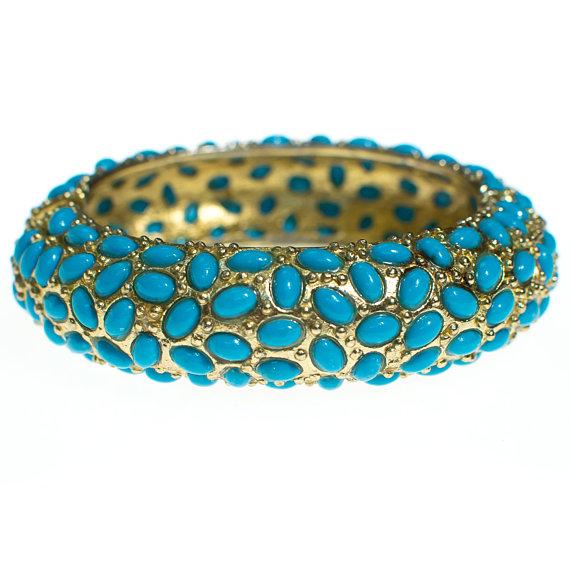
Above: 1960's studded turquoise bangle
11) PEARL BRACELETS
Pearl jewellery including bracelets have been popular since ancient times. Baroque pearls were very popular in the Baroque and later Renaissance period.
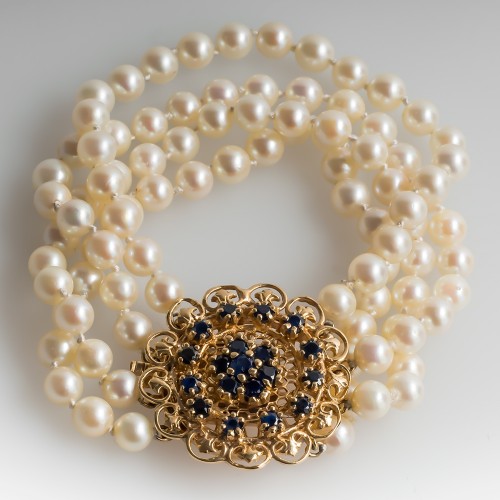
Above: Victorian pearl bracelet
12) WRAP BRACELETS
Wrap bracelets have tribal originals but were made popular by jewellery designer Chan Luu. They have simple designs comprising strands of beads or leather wrapped around the wrist.

Above: Antique Greek leather wrap bracelet
For further information on vintage jewellery check out our blog article ' The Complete Guide to Vintage
and Antique Necklaces'


